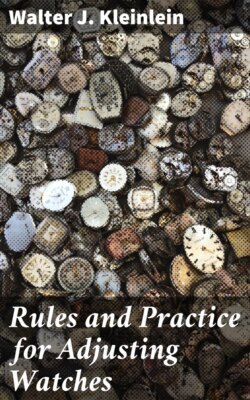Читать книгу Rules and Practice for Adjusting Watches - Walter J. Kleinlein - Страница 11
На сайте Литреса книга снята с продажи.
3.Composition of and Distortions of Compensation Balances.
ОглавлениеCompensation balances are generally made of one layer of brass and one of steel, with the brass on the outside consisting of about three-fifths of the total thickness and the steel on the inside consisting of about two-fifths. These metals are firmly soldered together and the distortions in changes of temperature are as follows. In heat both metals expand, which infers that the rims become longer as well as wider and thicker. Brass expands more than steel and because of its attachment to the steel it cannot continue to lengthen in its true circular form, due to the fact that the steel does not become enough longer to maintain the true curve, and the result is that the free ends of the rims are forced inward.
In cold the brass, contracting more than the steel, pulls the rim outward at the free end which is just in reverse of the operations in heat.
The end of the rim which is attached to the balance arm always moves in the opposite direction from the free end, or outward from the center of balance, when the free end moves in, and inward when the free end moves out. In comparison, however, this movement is negligible as will be noted later in the results obtained in moving screws in that direction.
